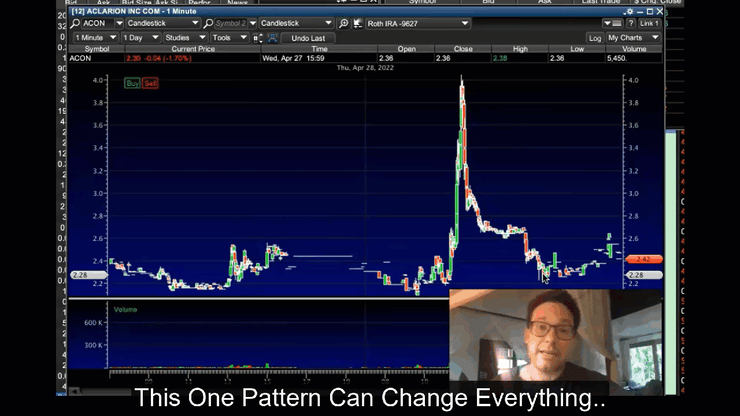Most people who try trading will not make money in the market…let alone experience life-changing results.
Despite the daunting odds, I’ve helped dozens of people crack seven-figures in trading profits by teaching them a systematic approach to trading by focusing on risk management and trade selection.
You see, most traders focus so much on making millions out of the gate they set themselves up for failure, one of the 13 most common mistakes traders make.
But what if I could give you a blueprint to start your day with that helps you avoid those common pitfalls?
Now, I won’t share all my secrets as that wouldn’t be fair to my subscribers.
They get access to the premium content.

Check out the one pattern I used to become a multi-millionaire in my 20s
But if you want to get a head start, here’s how you do it.
Table of Contents
PreMarket Prep
Unless you are some sort of wizard day trader, you cannot drop into your chair at 9:30 a.m. and expect to turn a profit.
Even though I’m half way across the world, I get a jump on the market before I plan to trade.
And here’s what you need to do:
- Review the broader markets – Even when you trade small cap stocks, they don’t move in isolation. Look at not just how the major indices are moving, but how small cap runners have performed over the past several weeks.
- Check out the date – It might sound weird, but stocks trade differently on Monday than they do on Friday or Wednesday. Lots of traders hit the ground running on Monday. But by Friday afternoon, we get into a lull as folks head home for the weekend.
- Look for Breaking News – This is by far one of the most critical pieces to finding and executing successful trades.
If you don’t have access to our Breaking News feature on the StocksToTrade platform you aren’t hunting with a full quiver of arrows.
The majority of my trades rely on stocks moving due to earnings, clinical results, and the like. Without this, I wouldn’t find most of my trades
- Choose your strategy – There are as many ways to trade the market as there are stars in the sky. Pick one strategy and stick with it until you get good. Don’t try doing 20 things at once. To be clear, you want to stick with a strategy that you like and understand.
- Review your watchlist – Every trade needs a good watchlist. This should include former runners, stocks with news from the past few days, and other equities of interest.
Every day you should go through the same process. Only change things once in a while and do it deliberately when you do. Forming habits is a great way to improve performance and consistency.
Focus on Making Good Decisions

Premarket preparation should be 90% of your focus.
The other 10% should be on the decisions you make.
Look, any given trade can succeed or fail. Trading is an exercise in probabilities.
We can’t control the outcomes, only the decisions we make.
So what are those decisions?
- The setups we pick
- How we execute a trade
In the section above I mentioned focusing on one strategy. You want to become as mechanical in your trading as possible.
Selecting one strategy hones you into a feel for how that strategy works. It helps you fine-tune your setup selection and execution.
That’s what decision-making is.
With any winning strategy, if you make enough good decisions over time, you will see your outcomes improve.
Know When to Fold’Em

Do you know what ruins more trades more than anything else? Ourselves.
Our emotions get in the way of our success.
That’s why the first two sections talk about building structure to your day and your trading.
But that only goes so far.
Now, you have to recognize when you need to reset.
Some traders have a max loss amount for a day or a week.
Or, you can simply recognize that your head isn’t in the right place.
I can tell you that it’s quite easy for a string of bad trades to set someone on tilt, where they get into the dangerous habit of revenge trading.
Do yourself a favor – once an hour, just do a quick mental inventory check and make sure you haven’t fallen prey to your worst instincts.
If you have, keep it simple – close out your positions and walk away.
There are plenty of trades out there when you come back tomorrow.
Final Thoughts
In case it wasn’t obvious, success comes down to preparation and decision making.
You can’t get there without patience and certainly without practice.
Can you cut the learning curve?
Absolutely.
You don’t have to start at square one.
My Supernova pattern is one of the easiest to recognize and use to become a better trader.
—Tim


Leave a reply